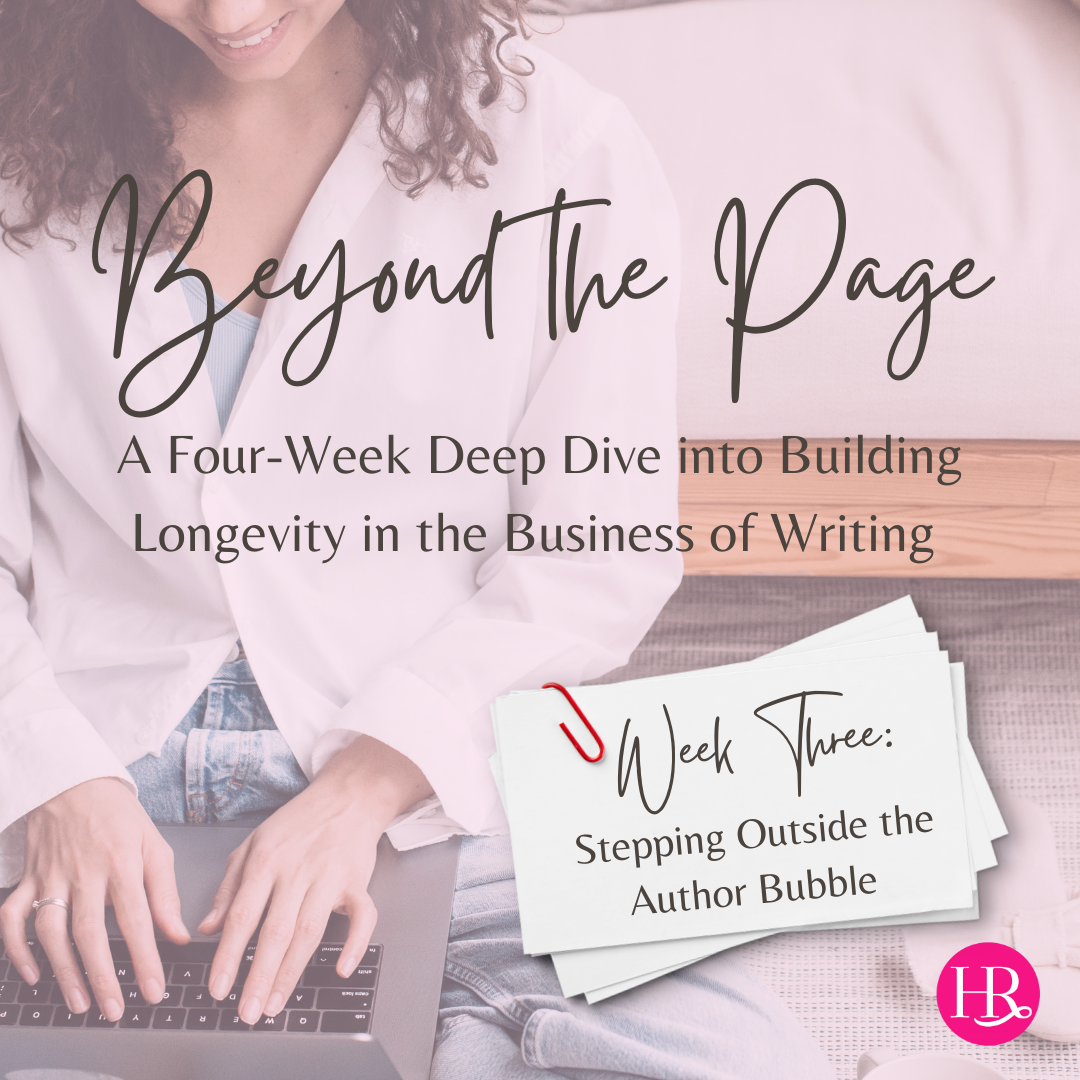Beyond the Page Week Three
Stepping Outside the Author Bubble
Stepping outside the author bubble is when your potential career can branch off in many ways. Every step you make on the outside can help determine your success as an author. So you’ve written the book. Now you have to get people to read it.
Readers’ styles come in many shapes and sizes. Some readers delight in having stacks and stacks of paperbacks, like their own little fort of reading heaven around them. Others devour books on their eReaders and are constantly searching for great books at a low price to feed their demand for more. Then there are those who want audiobooks they can consume during their busy lives. An author’s job is to figure out how to reach as many types of readers as possible.
Understanding Publishing Options
The first consideration an author makes is where he/she would like to publish. In order to make a solid decision, an author must understand her/his publishing options. Weighing out the pros and cons of traditional publishing, digital-first publishing, and self-publishing is imperative to find the best publishing strategy for each project. Let’s look at a few of the options:
Traditional publishers, typically based in New York, are established, large-scale publishers with teams for design, marketing, editing, and other aspects of publishing. Their books are found both online and at brick-and-mortar bookstores. Usually, their eBooks are priced higher than digital-first publishers, at $9.99 or more. Their paperbacks range from around $10 to $20 (or more for bestsellers). Most traditional publishers require an agent for submission. Their focus is extensive, wide distribution. They utilize print runs and may print in mass-market, trade, and/or hardback. Books may be available in eBook, audiobook, and paperback. Authors should receive a percentage of sales from each book and are not required to pay for any publishing services.
Digital-first publishers can vary in size of staff. Their books are found online, and select titles may or may not be distributed to brick-and-mortar stores. They typically have a wider span of pricing for eBook, ranging from $0.99 to those prices used by traditional publishers, although, on the whole, digital-first eBook pricing tends to be lower than the traditionally-published average. Digital-first publishers utilize on-line strategy and produce books in digital form as well as print-on-demand (POD) paperback form and audiobook. (For the difference between trade and POD paperbacks, see our blog post here.) Authors should receive a percentage of sales from each book and are not required to pay for any publishing services.
Independent publishers (also called indie or small press publishers) might operate similarly to a traditional publisher or a digital-first publisher. However, they might use new and different strategies for design, sales, marketing and other aspects. Due to their size, independent publishers have the freedom to organize their structure in other ways. Also, due to the smaller size of an independent publisher, they may also work more collaboratively with their authors. Depending on the structure of the independent publisher, they may utilize varying pricing models and produce eBooks, audiobooks, PODs, and/or books in brick-and-mortar stores. Authors should receive a percentage of sales from each book and are not required to pay for any publishing services.
Balancing Art and Commerce
Once an author has found that perfect publisher, they must begin the task of making the manuscript marketable. Editing is collaborative and occurs outside of that author bubble. One of the most daunting hurdles for authors can be finding the balance between artistic expression and commercial sustainability. The goal of any publisher is to reach the widest audience possible. While they attempt to reach a wide audience with marketing efforts, packaging of the book and the like, sometimes that reach is also dependent upon the story itself. An author might have to ask himself/herself whether a change in their story is worth the possible reach and impact that change will make. It takes a leap of faith by the author in his/her publishing team.
Another area where seasoned authors have a lot of practice is knowing when to take creative risks and when to stay with proven formulas. At the beginning of my career, while I was still learning how to get what was in my head onto the page in a way that the reader would understand my vision fully, I stuck to the formula. Now, twenty-three-plus books in, I have a wider understanding of the craft and can take calculated risks. I do, however, still rely on my editors to steer me in the right direction.
Continued Learning
The final aspect of stepping outside the author bubble is continuing education. I’m currently reading eleven books. (I read a chapter in one every day.) Of those eleven books, five of them are on the business of writing—almost half. And that’s after publishing twenty-three novels myself. The more an author knows, the better he/she writes. The marketing and packaging can get the book into the hands of readers. But the story is what draws them back in for that author’s next book.
Stay tuned next week for the final chapter in our series “Beyond the Page,” where I chat about expanding perspective.
Until then,
Jenny
© 2023
